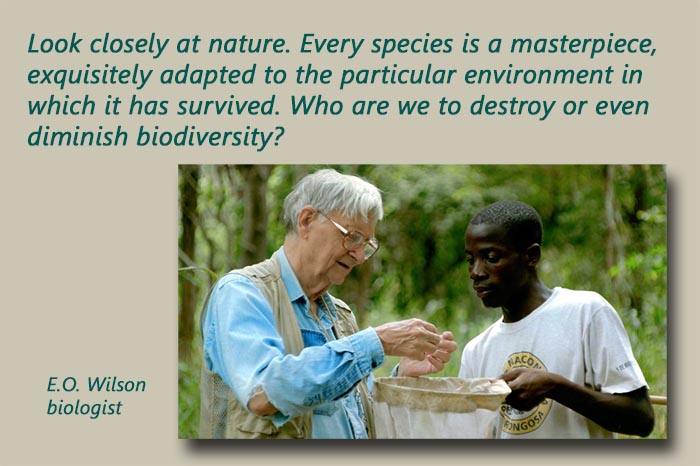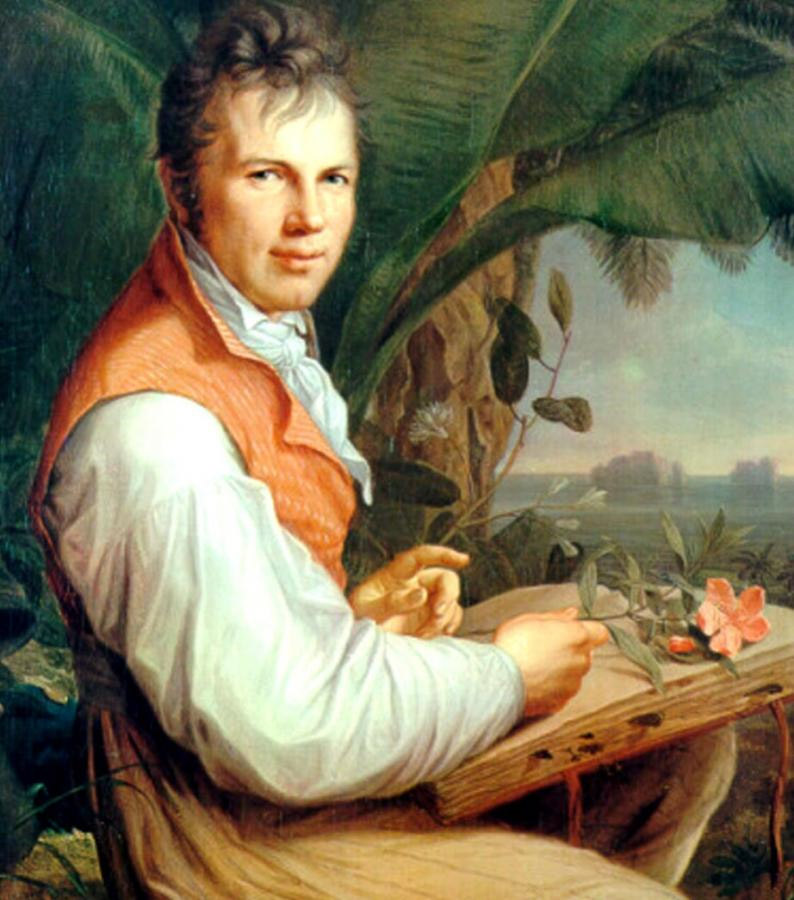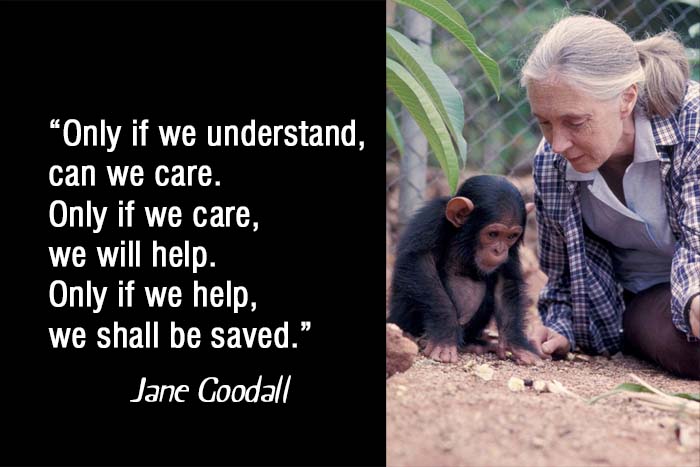
Conservation: From Awe to Understanding
Starting more than two hundred years ago, collectors searched the new world in a quest to bring back strange and new orchid species, mostly for Europeans who were wealthy enough to be able to afford creating an environment in which orchids would be able to thrive. The orchid mania of that period was so prevalent, it resembled the Tulip Mania of the 17th century.
Even though exotic plants were admired for their beauty, whether orchids or tulips, there was always a commercial aspect to having something rare. The rarer the plant, the greater its value on the collector’s market.
19th Century naturalists were the rock stars of their day
Fortunately, interest in nature is not always based on commercial value. There is always the human tendency to want to know about the world outside of one’s immediate surroundings. Anything about the New World across the Atlantic was of particular interest to Europeans of the day. They were immensely curious to see the plant and animal specimens brought back by naturalist explorers.
The sudden exposure to the immense diversity of planet Earth held people in thrall about the wonders of nature. The most prominent naturalist of the day, Alexander von Humboldt, has been compared to modern-day rock stars, with audiences lining up to hear him describe the new worlds he found in South America.

Nature soon caught the public’s attention in a dramatic new way when Charles Darwin, a great admirer of Humboldt, began to look at nature–not just as a curiosity, but for a key to understanding how it worked. Darwin’s lifetime of work, captured brilliantly in “On the Origin of Species”, is still considered today to be one of the most significant contributions to human knowledge about the natural world.
Respect for nature takes a back seat to commercial interests
If only the sense of awe and wonder about nature had caused humanity to have more respect for it. Unfortunately, nature has always been regarded as something to be tamed, owned and exploited. Fast forward to the 1900’s in the U.S. and we find that people had wiped out the millions of buffalo, driven the carrier pigeon to extinction, and eliminated most of the native people who had been living sustainably on the land for millennia. In their place, cattle ranching and farming took over much of the landscape.
In the 1930’s a new wave of environmental thinkers, of which Aldo Leopold was one of the most influential, came on the scene. We are still greatly benefiting from the preservation concepts he developed and the legacy he left with the founding of The Wilderness Society. His time spent observing nature advanced his understanding of how species interacted. As a result of his extensive study of nature, he developed an attitude toward species such as wolves and bears which was very different from that displayed by cattle ranchers and farmers. His realization of the role played by these species in the entire ecosystem shaped our early understanding of the need for species protection and taught us how to live with nature.
But living with nature is something very few of us do. In our present day we see a different world where we primarily experience nature only through watching National Geographic specials. These and many other outstanding videos are available, created through the remarkable patience and skill of professional photographers. Unfortunately, this form of experiencing nature only superficially expands our understanding of nature. The photographer is the only one that gains the true knowledge and understanding, after having observed her subject for days, months, and even years to get the prized footage we see in a few minutes of viewing.

Love of orchids encourages exploring nature
We as orchid growers are in a rare position to gain a deeper understanding and appreciation of the miracle of natural diversity. Our love of orchids keeps us in touch with nature, and we continuously experience awe when we see a new hybrid or species. Or, if you are like me, I am happy just to see new roots and blooms on the plants in my greenhouse. That by itself is a miracle, in my estimation!
Yes, we are more in touch with nature than many others but is this enough? We rarely can experience true natural habitat, and therefore have a limited knowledge of the biome that a species has adapted to, and adjusted to, slowly over millions of years. It is just too vast for us to experience first-hand. Orchid are brought to us just like the fruits and vegetables at the supermarket. This is a luxury that has not served us well, as few today can understand the value of nature and the importance of the complete biodiversity package that our planet offers, and the untold number of species, some 10 million yet to be discovered.

More specifically, what we don’t see is the overall picture of our planet, how all of nature’s biodiversity is interconnected, and why this interconnectivity is important. We also don’t see the whole picture about what sustainability is. For one thing, it is more than just saving the wolves, as Aldo Leopold quickly recognized, but it is the last step of recognizing that ALL of nature is connected, and it is important to maintain that interconnectedness to continue the sustainability that was achieved over the last millions of years.
One person who is leading the way in helping us understand biodiversity and how important it is to our survival famed biologist is Edward O. Wilson, a man many of us recognize as being the foremost authority on ants. His study of ants and his extensive research has helped understand biodiversity on a world-wide basis as few others have. His 2016 published book titled https://www.half-earthproject.org/Half-Earth – Our Planet’s Fight for Life lays it out for us. The “fight for life” is the fight for human survival, for without the Earth’s biodiversity intact, our world becomes unsustainable and uninhabitable for us. Half Earth refers to the amount of the earth’s surface required to sustain 80% to 85% of our species. Wilson’s research shows that with the survival of 80% or more of current species, a condition of sustainability can be achieved by nature. It may take decades, but It gives us a goal that assures our human survival as a species.
E. O. Wilson’s Half Earth Project
Half Earth includes both land and sea. Currently, only about 15% total land and sea have been set aside as protected area. We have a long way to go to meet the Half Earth goal, but as, Dr Wilson says in his talks, we can do it if want to and if we commit to it.
The E.O.Wilson Biodiversity Foundathttps://eowilsonfoundation.org/ion has been established to promote understanding and increase awareness of populations around the globe of the importance of preserving our remaining biodiversity. The Half Earth Project is a long-term project which must be started right away, because we are currently destroying species at a rate 1000 times greater than the rate nature can adapt to.
We don’t have a moment to lose. Just in the last few years, Earth has experienced a 60% drop in flying insects. Insects serve many important functions, not only pollinating orchids in the wild, but pollinating our food crops and serving as nourishment for birds. Getting the public to “want to” protect biodiversity, just as it is with freeing ourselves from fossil fuel addiction is a huge cultural shift. Both must be achieved, and both need the public to “want to” make the changes needed.
We only hope we get to this “want to” point through human intelligence and cooperation rather than waiting until Mother Nature decides to pick up her planet Earth Etch-A-Sketch and start over.
